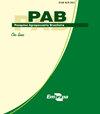籽粒中宏微量元素含量较高的普通豆类基因型的选择
IF 0.7
4区 农林科学
Q3 AGRICULTURE, MULTIDISCIPLINARY
引用次数: 1
摘要
摘要本研究旨在评价不同粒型菜豆(Phaseolus vulgaris)基因型在宏微量元素含量上的遗传变异性,并利用繁殖指数筛选优良基因型。在旱季和雨季进行的试验中,对22个普通豆类基因型进行了评价。测定了六种矿物(钾、磷、镁、铁、锌、铜)的浓度,并将乘法指数应用于单个和组合实验。基因型-环境互作对所有矿物质的浓度均有显著影响,当基因型效应分解为颗粒型时,三种或三种以上矿物质的浓度存在基因型差异。在旱季和雨季评估的普通豆基因型中,宏微量元素的浓度存在遗传变异。在联合实验中,观察到较高的遗传力估计(≥62.60%)和较大的总遗传增益(283.59%)。应用组合试验的繁殖指数可以选择以下籽粒类型的优良普通豆基因型:红(Amendoim comprido和Light red Kidney),蔓越莓(BRS Executivo和Hooter)和carioca (IPR Siriri),它们具有高磷和高铁浓度;阿莫多也因其高钾浓度而引人注目。本文章由计算机程序翻译,如有差异,请以英文原文为准。
Selection of common bean genotypes with higher macro- and micromineral concentrations in the grains
Abstract The objective of this work was to evaluate the genetic variability of common bean (Phaseolus vulgaris) genotypes of different grain types as to macro- and micromineral concentrations, as well as to select superior genotypes by the multiplicative index. A total of 22 common bean genotypes were evaluated in experiments carried out in the dry and rainy seasons. The concentration of six minerals (potassium, phosphorus, magnesium, iron, zinc, and copper) was determined, and the multiplicative index was applied to individual and combined experiments. There was a significant effect of the genotype × environment interaction on the concentration of all minerals, and, when the genotype effect was decomposed into grain types, the genotypes differed as to the concentration of three or more minerals. There is genetic variability in the concentration of macro- and microminerals in the common bean genotypes evaluated in the dry and rainy seasons. In the combined experiments, high heritability estimates (≥ 62.60%) and a greater total genetic gain (283.59%) are observed. The multiplicative index applied to combined experiments allows the selection of superior common bean genotypes of the following grain types: red (Amendoim comprido and Light Red Kidney), cranberry ('BRS Executivo' and 'Hooter'), and carioca ('IPR Siriri'), which have high phosphorus and iron concentrations; Amendoim comprido also stands out for its high potassium concentration.
求助全文
通过发布文献求助,成功后即可免费获取论文全文。
去求助
来源期刊

Pesquisa Agropecuaria Brasileira
农林科学-农业综合
CiteScore
1.20
自引率
0.00%
发文量
45
审稿时长
9-18 weeks
期刊介绍:
Pesquisa Agropecuária Brasileira – PAB – is issued monthly by Empresa Brasileira de Pesquisa Agropecuária – EMBRAPA, affiliated to Ministry of Agriculture, Livestock and Food Supply. PAB publishes original scientific-technological articles on Plant Physiology, Plant Pathology, Crop Science, Genetics, Soil Science, Food Technology and Animal Science.
Its abbreviated title is Pesq. agropec. bras., and it should be used in bibliographies, footnotes, references and bibliographic strips.
 求助内容:
求助内容: 应助结果提醒方式:
应助结果提醒方式:


